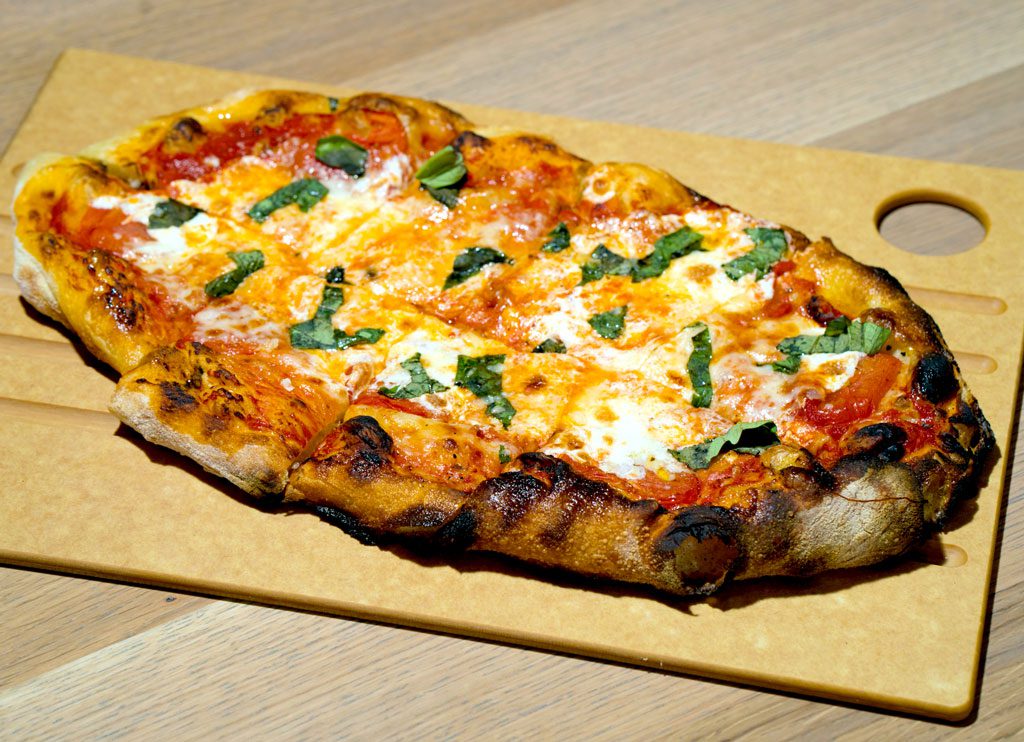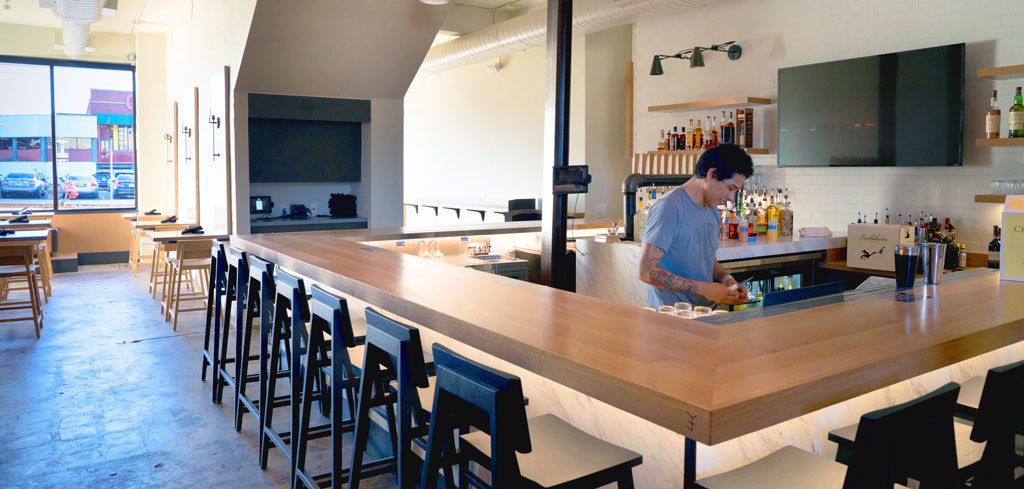
Sometimes, standing by the austere yet elegant gray walls of his Palace Cafe – one of Tulsa’s most revered fine-dining establishments on the corner of Cherry Street and Peoria Avenue – chef James Shrader reminisces about his grade-school trip to Seattle’s Pike Place Market, where his young, astonished eyes went wide due to the panoply of spices and flavors spread before him.
If you want to catch a glimpse of that happy child, just go next door to Prairie Fire Pie. There’s a big, plate-glass window and through it you’ll see a bright, pleasant space with white oak walls, track lighting and long, casual, plank tables made for sharing and family dining. Chances are you’ll see a youthful, agile man, bearded and wearing a T-shirt and baseball cap, probably in motion, often smiling, and as excited as a young boy on Christmas morning. That’s Shrader, too, at his other establishment.
Pizza, it seems, has undiscovered health benefits.
Shrader has always loved baking and, in recent years, has become fascinated by pizza. Making the dough seems easy, but it took him many months of experiments before he got it right.

“Now this is what I’m looking for,” he says as he breaks the soft, pillowy edge of a gleaming slice. “Look at those bubbles in the crust. It should be airy, light and crunchy with a little chew.”
It’s not like traditional New York or Naples pizza.
“We’re West Coast, and that means innovation,” says Shrader, noting that the crust isn’t modeled after old-school pizza, but instead after a bread, ciabatta. “We use more water in the dough, and that makes it much more delicate and hard to work with, but it’s worth it.”
Making the dough for a Prairie Fire Pie pizza arguably takes more time, skill and effort than a fine-dining entree. It takes two days.

To start, Shrader says, “we make a bubbly-looking wet goo” called a biga. It has some sourdough starter and gets wild yeast from the air. “We throw flour on it and then fold it every 20 minutes for two hours. That’s what gives us the lovely bubbles.” Then it sits in the refrigerator overnight. It must be used the next day or discarded. The dough is carefully shaped and pulled into an oval. Toppings are added. Then the pie goes into the wood-burning oven.
“The oven is pretty straightforward,” Shrader says. “But I haven’t quite mastered it yet. After I’ve had a thousand hours of practice, I’ll be competent.”
The pizza comes out as a gleaming, bubbly beauty. The toppings shine. Plus, this isn’t your grandma’s pizza. Yes, some have tomato sauce and sausage. But others have potatoes and sunny-side-up eggs.
“I’ve paired a different cheese to each topping,” Shrader says. “Sausage has pecorino because sausage demands a robust cheese. But potato is more delicate, so I gave it mild mozzarella.”

Prairie Fire is not just about pizza. You can start your meal with a delicious oven-baked fondue of fontina cheese and crusty bread for dipping, or a plate of roasted carrots dusted with harissa.
“We also have chicken wings,” Shrader says. “I included them to show the world that this is not a prissy, fine-dining place; it’s casual. I’m trying to please a whole new demographic and that’s why our pies are priced so low, mostly $15 and under.”
And why pizza?
“I love it. You can never do a standardized, perfect pizza,” he says. “Each pizza is different; each pizza bakes differently from the last. It’s a challenge. It’s fun.”






















